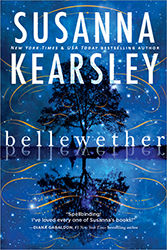The New York Times described this book as "completely outrageous and genuinely entertaining."
That pretty well sums up my reaction as well. This novel by Josh Bazell, who holds a degree in English literature and is an MD, is based on a protagonist, let's call him, Peter Brown, who is a first year resident in a miserable inner city hospital. The hours are terrible, the nursing staff is incompetent, and Peter relies on drugs to get through the day. But when the story opens he goes to evaluate a new patient and the man recognizes him as a hit man for the Mafia, Pietro Brnwa. Does Peter/ Pietro kill him right away to avoid having his new identity revealed to those who still seek to wipe him from the face of the earth, or does his Hippocratic oath prevent that?
The story moves back and forth in time, so we gradually learn how a good Jewish boy becomes a hit man and then becomes a target. The book is highlighted by footnotes that are designed, according to the author, first to entertain and secondly to inform. Thus we learn about medical terminology, the stages of grief, the reality of Auschwitz, and the total irrelevance of the fibula bone in your lower leg (this will turn out to be significant at a later point in the story). The details are gruesome at times, the humor is clearly very dark, and this book kept me distracted on a long flight home. I would absolutely read anything else he wrote. Additional reviews from The Washington Post, Kirkus, The Guardian, and Publishers Weekly.
That pretty well sums up my reaction as well. This novel by Josh Bazell, who holds a degree in English literature and is an MD, is based on a protagonist, let's call him, Peter Brown, who is a first year resident in a miserable inner city hospital. The hours are terrible, the nursing staff is incompetent, and Peter relies on drugs to get through the day. But when the story opens he goes to evaluate a new patient and the man recognizes him as a hit man for the Mafia, Pietro Brnwa. Does Peter/ Pietro kill him right away to avoid having his new identity revealed to those who still seek to wipe him from the face of the earth, or does his Hippocratic oath prevent that?
The story moves back and forth in time, so we gradually learn how a good Jewish boy becomes a hit man and then becomes a target. The book is highlighted by footnotes that are designed, according to the author, first to entertain and secondly to inform. Thus we learn about medical terminology, the stages of grief, the reality of Auschwitz, and the total irrelevance of the fibula bone in your lower leg (this will turn out to be significant at a later point in the story). The details are gruesome at times, the humor is clearly very dark, and this book kept me distracted on a long flight home. I would absolutely read anything else he wrote. Additional reviews from The Washington Post, Kirkus, The Guardian, and Publishers Weekly.


